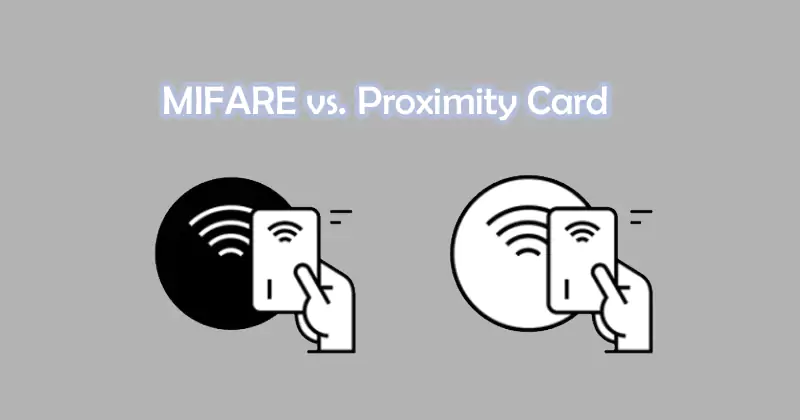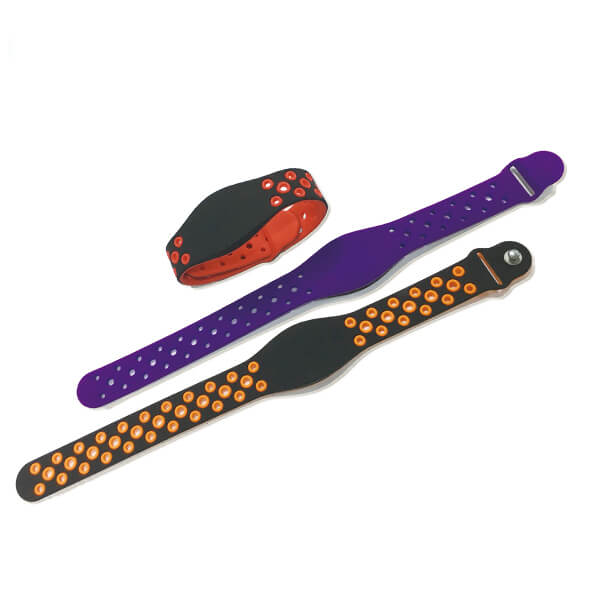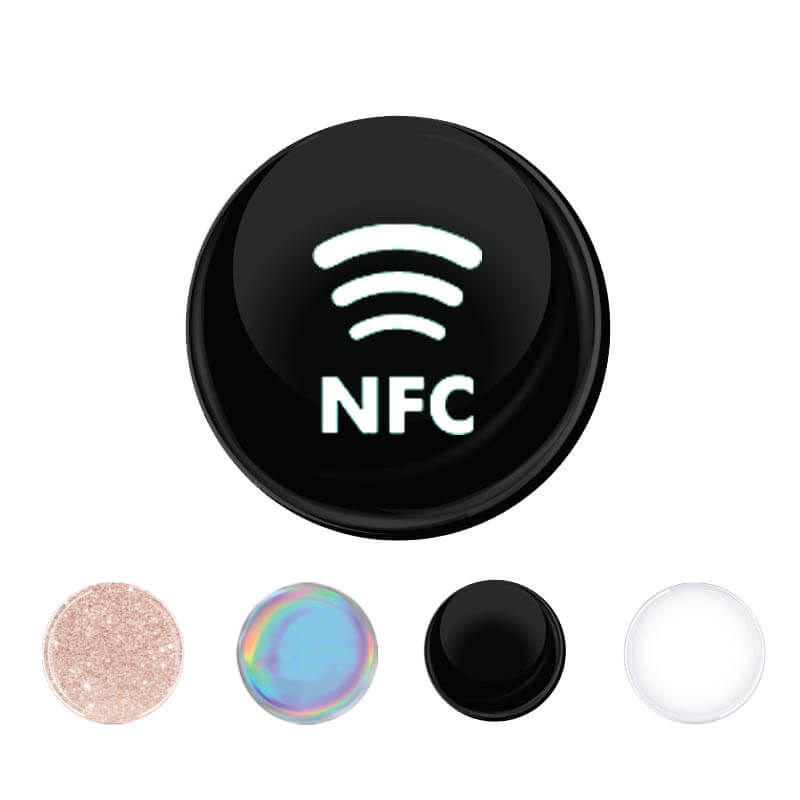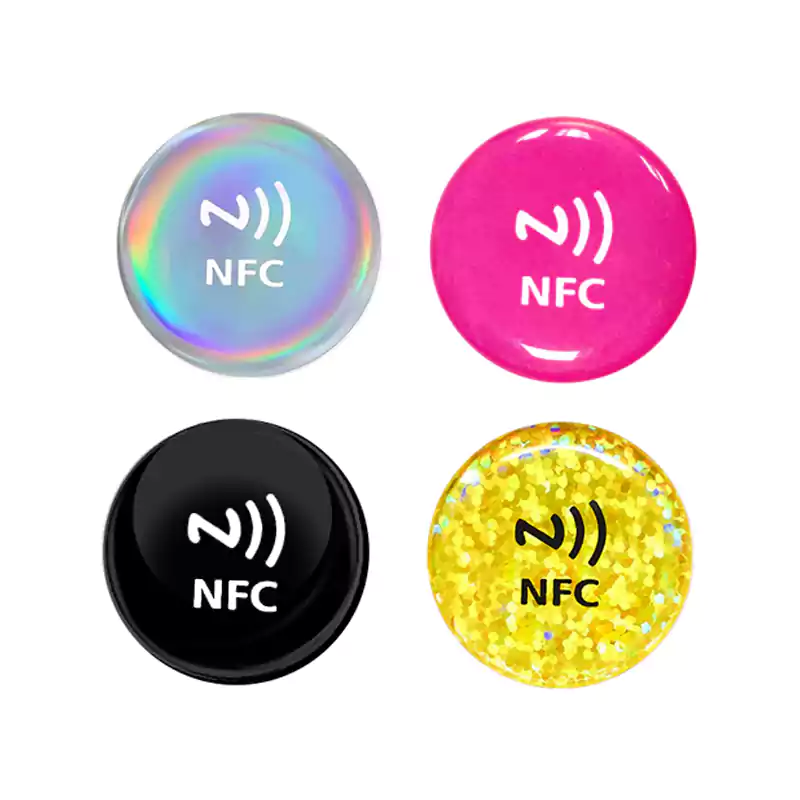Organizations have adopted the use of proximity cards and MIFARE for identification and access control. The technologies simplify your operations, saves time, and enhances security.
While the two technologies have an almost similar working rationale, a few differences set them apart.
So, what are the exact differences between a MIFARE and a proximity card? This article offers an in-depth analysis of the two technologies, complete with the features, advantages, and limitations.
What is a Proximity Card?
A proximity card, also called a prox card, is a low-frequency contactless card that uses 125 kHz radio waves to communicate with a reader.
Unlike the traditional magnetic cards, the prox cards do not require insertion into the reading device. The absence of swiping guarantees convenience and enhances security.
When you bring the card close to the reader, it will detect the radio waves and send the data back to the reader in less than a second. When that happens, the reader will produce a beep sound.
How Proximity Cards Work?
The cards are embedded with a metallic antenna coil that stores all the cardholder’s data. The device uses a low-frequency of 125 kHz to transmit the data to the reader.
As such, the cards have a relatively small read range of up to 50 cm (or approximately 15 inches). However, this read range is enough to allow you to leave your card in your wallet/purse and still have your data captured by the reader.
The card is primarily used to allow access to buildings and other designated areas. If you’re wondering how these cards work, then here’s a detailed explanation:
The proximity card system contains the following crucial elements:
- A proximity card
- A pre-programmed card reader
- System software for data analysis
These proximity cards contain a pre-determined number that can be recognized by a pre-programmed reader.
When the card is close to the reader, the reader will capture the data and transmit it to the system software.
The software will then analyze the data and determine whether it matches any of the pre-programmed numbers. If the reader accepts the card number, the doors will open, thus allowing access.
What is MIFARE?
MIFARE stands for MIkron FARE Collection System. The NXP’s card is small enough and can be housed in different materials, including wristbands, smartphones, plastic materials, and key fobs.
Due to this flexibility, MIFARE has gained tremendous popularity in employee identification, transportation, stadium access management, and library control. The technology complies with the ISO/IEC 14443.
Where MIFARE Technology Began
The technology was introduced in 1994 under the ISO/IEC 14443 memory IC standard. Many organizations adopted it to implement contactless smart card systems.
Applications of MIFARE Technology
MIFARE is used for authentication, identification, and information storage. Some of the areas where the technology applies include:
- Transportation. MIFARE cards are valuable assets in the ticketing sector. They allow quick and cashless payment in buses and trains. Some of the remarkable MIFARE ticketing cards include the Clipper Card in San Francisco, Oyster Card in London, and TROIKA Card in Moscow.
- University Library Identification Systems. Institutions worldwide have adopted the MIFARE technology to identify students, allow access to various university departments, and manage inventory. Some universities using the MIFARE system include Cambridge, San Francisco, and the National University of Singapore.
- Access Control in Corporate Building. Many corporates are adopting MIFARE as part of their security management system. Some of the institutions that have adopted this technology include the EU Commission, Nestle, and General Motors.
- Guest Management in Hotels. Many hotels are using MIFARE to manage their inventories and allow access to their rooms. Some of the hotels using this approach include Hilton, Rosewood, and Hyatt.
- Stadium Management. Managing fans can be cumbersome if you fail to instill stringent security measures. Due to these difficulties, most of the stadiums have started using MIFARE to control their fans. Such stadiums include Manchester, Sao Paulo, and Istanbul.
Many other sectors are adopting the use of MIFARE due to its ease of application and guaranteed security. The technology meets all the ISO/IEC 14443 standards on Near Field Communication (NFC) transmission.
Types of MIFARE Cards
MIFARE cards come with a small chip that has enough memory to store information. It operates at 13.56 MHz frequency, similar to the HF tags. Here are the different MIFARE tags that you can consider when shopping:
- MIFARE Classic
This is a write/read chip with a 4-byte non-unique identifier or a 7-byte unique identifier feature. It is relatively affordable compared to other chips in the market.
Since it was the initial MIFARE chip, it experienced several security challenges. As a result, NXP produced more improved chip versions for enhanced safety and security.
- MIFARE Classic EV1
This is a chip that comes with either 1K or 4K EEPROM memory. It has powerful encryption features and transfers data at a rate of 106 kb/s.
- MIFARE DESFire
The chip comes in EV1, EV2, and Light versions. It integrates unique security features, including 3-factor authentication and an on-chip backup system.
Additionally, the tag is NFC Tag type 4, ISO/IEC 14442A, and ISO/IEC 7814-4 compliant. Compliance guarantees the security of the stored data. It has the potential to transfer data at 848 Kbit/s.
- MIFARE Plus
This version has MIFARE Plus EV2 and MIFARE Plus SE. It has top-notch security features such as data encryption and AES authentication. The MIFARE Plus cards are also ISO/IEC 14443 certified.
- MIFARE Ultralight
The chip comes with an IOS unique identifier and one-time programmable memory. It has three variations, including the MIFARE Ultralight C, the MIFARE Ultralight EV1, and MIFARE Ultralight Nano.
MIFARE vs. Proximity Cards: What’s the Difference?
There are four main differences between a MIFARE and a proximity card. They include:
- Frequency of Operation
A MIFARE card operates at 13.56 MHz, which is equivalent to a high-frequency RFID tag. On the other hand, a standard proximity card operates at 125 kHz. As such, a MIFARE card will have a relatively better read range than the prox cards.
- Memory/ Storage Capacity
A MIFARE comes with a memory to store data. It can store crucial information regarding the cardholder, thus making it ideal for inventory management. The storage capacity of the MIFARE cards differs with the type but averages 1-kilobyte data.
Proximity cards lack space to store data. As such, these cards are only useful when used with pre-programmed numbers to allow access to restricted areas.
- Configuration
A MIFARE card has a unique 32-bit serial number that is programmed from the factory. This number is random and does not have the facility code. On the contrary, 26-bit proximity cards must be configured with a facility code.
- Functionality
MIFARE cards have a wider range of uses than proximity cards. They can be used in different areas, including contactless/cashless payment, road tolling, identification, access control, and fare collection system.
Even better, you can program the MIFARE card with multiple data. This feature allows you to update the card’s details to include all the information that you need for various purposes. Also, the MIFARE memory can be used with pre-paid membership cards and cash cards.
On the contrary, the use of proximity cards is limited to access control. These cards have static numbers that must match those in a pre-programmed reader. After the match, the cardholder is allowed access. The cards do not hold any personalized data of authenticated personnel, which may compromise security.
RFID Readers and Proximity Card Readers – What Are They?
An RFID/Proximity card reader is a device that can read and interpret data contained in a chip. The readers can either be portable or fixed.
When you select the fixed type, you’ll be required to choose an easily accessible location to install it. Ensure that there are no obstacles that can affect the transmission process.
Why RFID and Proximity Card Readers are Important
MIFARE and proximity cards are part of an entire system. If you want to get the best results, you must ensure a synergistic approach on MIFARE and Proximity card systems.
To achieve this, you must have highly efficient card readers. These readers, also called interrogators, are designed to capture the cards’ data and analyze it.
How to Choose an RFID Reader
When selecting your readers, you should consider the following factors:
- Ability to Read Your Cards. Before you get a reader, you should ensure that it can read your card’s frequency. For example, you can have a reader that only reads 125 kHz frequency cards. In such a case, the reader will not help you if you have a MIFARE card.
- Software Considerations. After the reader captures the data from your cards, it sends it to software for a detailed interpretation. MIFARE cards come with a 32-bit number configured from the factory, while the proximity card 26-bit number. As such, you must ensure that your software can interpret the pre-encoded data without a hassle.
When you buy your reader, ensure that you place it strategically to capture all the cards entering your premise. Additionally, you should check compatibility with your cards before buying it.









